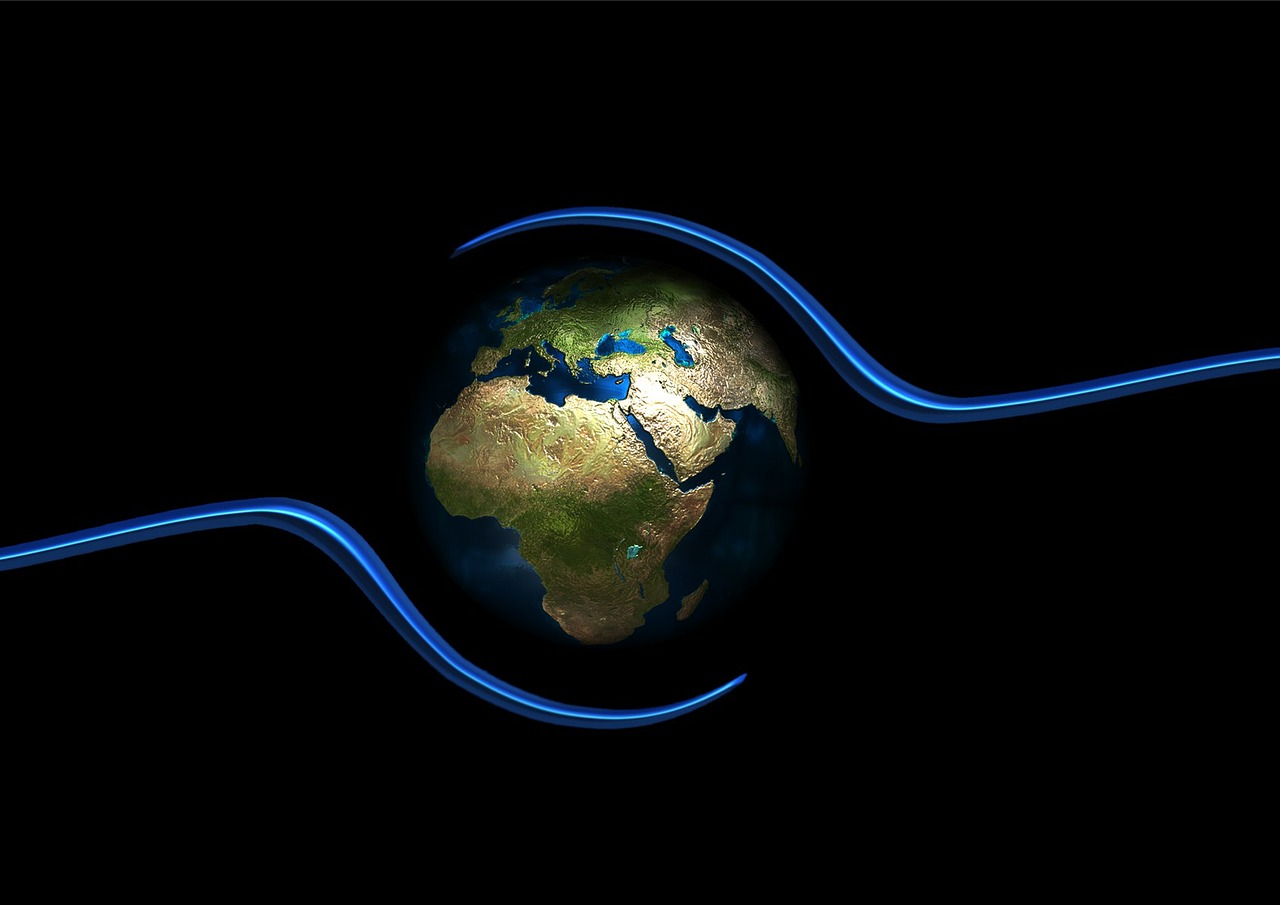
25 Aug Reduce Your Carbon Footprint (And Your Bills) With Your Smartphone
The planet is already feeling the effects of Climate Change.
According to a recent report by the Intergovernmental Panel on Climate Change, ice caps are melting, sea ice in the Arctic is collapsing, water supplies are coming under stress, heat waves and heavy rains are intensifying, coral reefs are dying and fish and many other creatures are migrating toward the poles or in some cases going extinct.
However, it’s not just the environment that will suffer. The report explains that climate change impacts are expected to “slow economic growth, make poverty reduction more difficult, further erode food security,a nd prolong existing and create new poverty traps.”
So, as stated by Rajendra K. Pachauri, chairman of the intergovernmental panel, “nobody on this planet is going to be untouched by the impacts of climate change.”
When faced with findings such as these, it’s easy to feel as though you are powerless to help.
What most of us seem to forget is there are things we can do everyday that can reduce our carbon footprint. These small things not only help in the fight against climate change, but also reduce the strain on your wallet, making it a win for you and the environment!
But, as with most things, the hardest part is knowing where to start. Here’s where your smartphone can help!
Firstly, What Is a Carbon Footprint?
Before we get into how you can reduce your carbon footprint, it’s certainly useful knowing what this term means.
The Guardian offers a great explanation, breaking the phrase down into its two component parts:
Footprint: “When talking about climate change, footprint is a metaphor for the total impact that something has.”
Carbon: “Carbon is shorthand for all the different greenhouse gases that contribute to global warming.”
So, carbon footprint then refers to the best estimate we can get of the full climate change impact of something such as an activity, an item, a lifestyle, a company, a country or even the whole world. While greenhouse gases encompass much more than just carbon dioxide (Methane, Nitrous Oxide and refrigerant gases are also part of this category), it has become best practice express a carbon footprint in terms of the carbon dioxide equivalent to reduce complexity.
So, what can you do to reduce your carbon footprint and how can your smartphone help?
 Tracking Your Carbon Footprint
Tracking Your Carbon Footprint
First things first, as with all instances of measuring success, you need to know where you started to be able to evaluate your progress.
This is where tracking your carbon footprint is important. By calculating your current carbon footprint, you effectively have a benchmark to measure whether the changes you make are reducing your carbon footprint.
Lotus Greens Carbon Calculator (Free, Android)

Lotus Greens Carbon Calculator offers a simple way to quantify your effect on the environment.
The free app allows you to track your impact while doing everyday activities such as using your computer, driving your car or commuting on a train. It splits up activities into four categories, which include Home, Work, Travel and Lifestyle so you can see where you need to make the most changes.
You can view your total Co2 emissions via a pie chart, which breaks up the usage based on the categories. You can also see how your score compares to the world
To help you along, the app also provides some actionable steps that you can take to reduce your carbon footprint.
Lotus Green Carbon Calculator is available for download from the Google Play Store for Android.
Carbon8d (Free, iOS)
Just like Lotus Greens Carbon Calculator, Carbon8d makes it easy to track your daily, weekly, monthly or momentary carbon emissions. The app supports tracking carbon emissions relating to driving your car, using public transport and household activities, with the data displayed in a graph.
Aside from the fun visual element, the app sets itself apart by viewing your Co2 offset generated by bike or foot travel, compared to the amount you would have generated had you driven a car.
The developers of the app aim to extend the offset feature of the app in the future by allowing users to plant virtual trees in their forest via an in-app purchase. For each virtual tree, a live tree will be planted in the Amazonian rainforest via the “Plant a Billion Trees” project (run by Nature conservancy).
Carbon8d is available for download from the App Store for iOS.
Energy Saver (Free, iOS and Android)

Our electricity usage not only impacts the environment but our wallets too.
According to Carbon Neutral, electricity usage contributes around 36% of Australia’s carbon emissions, while the Australian Bureau of Statistics found that it makes up around 5% of the gross weekly income for households. So, by reducing electricity usage you can kill two birds with one stone. Not only are you helping to reduce Australia’s carbon emissions, but your weekly electricity costs too.
While the previous two apps offer tracking for household Co2 emissions, Energy Saver makes it easy to track your electricity usage specifically, separating it from other household sources of emissions and costs.
The app allows you to easily track your Electricity, either automatically if you have a Current Cost Energy Monitor (with a Current Cost Bridge) or via reading values. To get a deeper insight into your usage, the app includes configurations for peak, off peak, shoulder, daily supply charge and solar energy. This data is then displayed in charts and graphs to make it easy to analyse your usage.
To keep track of how much your electricity is costing you, you’ll need to enter the electricity rates using Standard Price, Step Price and Time of Use price. If you find your rates are particularly high compared to your usage, the app lets you also compare the rates and deals of Australian electricity providers and sign up to a better plan from your device. Data relating to your average electricity bill is also displayed in charts or graphs.
Future features of the app include being able to pay your electricity bill from your smartphone, as well as extending usage tracking to gas and water consumption.
Energy Saver is available for download from the Google Play store for Android and the App Store for iOS.
More Sustainable Everyday Habits
Now that you can track your impact on the environment, it’s time to do something about it.
Joule Bug (Free, iOS, Android)

Who says reducing your carbon footprint can’t be fun?
Joule Bug brings gamification (and some healthy competition) to changing our everyday habits to benefit the environment as well as our bank accounts. In fact, it claims on its website that “Joule Bug can save an individual more than $200 a year”.
The app provides a list of habits (called ‘Pins) you can implement daily to reduce your impact on the environment. These pins can be filtered by the categories such as Energy, Water, Waste, Transportation and even Shopping among others.
Each pin shows the impact that habit can have both in money saved and Co2 emissions reduced, as well as some How-To videos and helpful links to get you going. Each time you implement a habit such as turning off a light switch when you leave a room, you earn points.
Here’s where the competitive part comes in.
The app allows you to follow your friends to see what they are doing and compete with them via the leaderboard. To compare with your friends, you will need to connect the app to your Facebook or Twitter account.
Joule Bug is available for download from the Google Play store for Android and the App Store for iOS.
ABC Vegie Guide (Free, iOS)
Growing your own vegetables isn’t only good for your dinner table, it’s good for the planet too.
Did you know, currently 25-30% of all greenhouse gases produced are the result of agricultural production?
This is not only due to the demands placed on the land by commercial agriculture, but even the carbon emissions produced from the transportation and refrigerated storage required. So, by growing your own veggies, you not only get the satisfaction of a successful green thumb, but also the satisfaction of fighting climate change.
To help you grow a successful veggie patch, the ABC launched the ABC Vegie Guide. This free app uses your location to filter the list of recommended veggies for your climate, helping your garden thrive. It also provides tips for growing and pest and disease control as well as a harvest guide to help you produce healthy plants throughout the year.
The app allows you to keep a running record of notes about what you have planted in your ‘Patch’ and when. You can add photos of your plants and make notes on the progress, with the app also prompting you as to when your plants should be ready to harvest.
ABC Vegie Guide is available for download from the App Store for iOS.
While technology has certainly contributed its fair share to the climate change crisis, it also has the potential to help us rectify it. Your smartphone gives you all the information and tools you need to make small changes to your everyday life that will have a positive impact on the environment.
With so many easy ways to reduce your carbon footprint, what are you waiting for?



